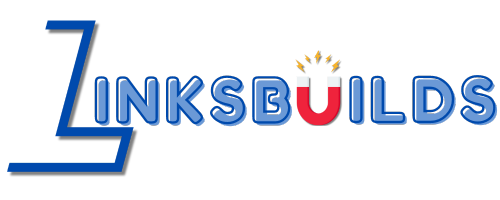When starting a web design business, it’s crucial to identify your niche and target market. Your niche is the specific area of expertise or industry you focus on, while your target market is the group of people or businesses you aim to serve with your services.
To identify your niche, consider what industries or types of websites you have a passion for designing. Whether it’s e-commerce sites for small businesses, portfolio websites for artists, or corporate websites for tech companies – finding your niche will help set you apart from competitors.
Once you’ve identified your niche, research and understand your target market. Who are they? What are their needs and pain points? Tailor your marketing efforts towards reaching this specific audience effectively.
By honing in on a specific niche and understanding your target market, you can position yourself as an expert in that area and attract clients who align with your unique offerings.
Essential Skills for a Successful Web Design Business
When starting a web design business, having essential skills is crucial to stand out in the competitive market. Creativity plays a significant role in designing visually appealing and innovative websites that capture users’ attention. Having a keen eye for design trends and aesthetics can set your work apart from others.
Proficiency in coding languages such as HTML, CSS, and JavaScript is fundamental for building functional and responsive websites. Understanding how to optimize websites for speed and SEO will enhance the user experience and boost search engine rankings.
Moreover, effective communication skills are essential when working with clients to understand their needs and vision for their website. Being able to translate technical jargon into layman’s terms will facilitate smooth collaboration throughout the project.
Staying updated on industry trends and continuously improving your skills through online courses or workshops is vital to stay relevant in this ever-evolving field of web design.
Setting Up Your Business: Legal, Financial, and Marketing Considerations
When starting a web design business, it’s crucial to set up the right legal structure. Register your business with the appropriate authorities and obtain any necessary licenses or permits. Consult with a legal professional to ensure you comply with all regulations.
Financial planning is key to the success of your business. Create a detailed budget that accounts for expenses like software subscriptions, marketing costs, and employee salaries if applicable. Consider setting up a separate business bank account to keep personal and business finances separate.
Marketing is essential for attracting clients. Develop a comprehensive marketing strategy that includes online promotion through social media, SEO optimization of your website, and networking within the industry. Invest time in building relationships with potential clients through outreach efforts and attending industry events.
Remember that setting up your web design business requires careful consideration of legal, financial, and marketing aspects to lay a solid foundation for future growth.
Tools and Resources for Web Designers
As a web designer, having the right tools and resources at your disposal is essential for creating stunning websites. One of the most popular tools among designers is Adobe Creative Cloud, which includes software like Photoshop, Illustrator, and XD for designing graphics and prototypes.
For wireframing and prototyping, tools like Sketch or Figma are widely used in the industry due to their user-friendly interfaces and collaborative features. Additionally, platforms such as WordPress or Squarespace make it easy to build functional websites without extensive coding knowledge.
To stay organized and efficient in project management, tools like Trello or Asana can help you keep track of tasks and deadlines. When it comes to testing website responsiveness across different devices, BrowserStack is a valuable resource that allows you to preview your site on various browsers.
Staying updated with design trends and techniques can be done through online resources like Smashing Magazine, Awwwards, or Designmodo. Continuously learning from these sources will help you evolve as a designer in this ever-changing digital landscape.
Building Your Portfolio and Attracting Clients
When starting a web design business, building a strong portfolio is key to attracting clients. Your portfolio showcases your skills and creativity, giving potential clients a glimpse into the quality of work you can deliver.
Include a variety of projects in your portfolio to demonstrate your versatility – from e-commerce websites to personal blogs. Showcasing different styles and functionalities will appeal to a broader range of clients with diverse needs.
Highlight any specializations or unique selling points in your portfolio that set you apart from other web designers. Whether it’s expertise in responsive design, SEO optimization, or user experience, make sure these strengths are front and center for potential clients to see.
Don’t underestimate the power of client testimonials and case studies in your portfolio. Positive feedback and successful project stories can build credibility and trust with new clients who are considering hiring your services.
Regularly updating and refreshing your portfolio with new projects will keep it relevant and engaging for visitors. By consistently showcasing your best work, you’ll continue to attract new clients looking for top-notch web design services.
Managing Projects and Delivering Quality Work
When it comes to managing projects as a web designer, staying organized is key. Create a detailed timeline for each project, outlining tasks and deadlines. Use project management tools like Trello or Asana to keep track of progress.
Communication is crucial for delivering quality work. Regularly updating clients on the status of their project helps manage expectations and builds trust. Be open to feedback and revisions to ensure the final product meets client expectations.
Prioritize testing and quality assurance before launching a website. Check for bugs, broken links, and overall functionality across different devices and browsers. Pay attention to details that can impact user experience.
Collaborate with developers or other team members when needed to enhance the final outcome of your projects. Effective teamwork leads to better results and satisfied clients.
Tips for Networking and Continuous Growth
Networking is a crucial aspect of growing your web design business. Attend industry events, join online forums, and connect with other professionals in the field to expand your network. Building relationships can lead to word-of-mouth referrals and new opportunities.
Utilize social media platforms like LinkedIn to showcase your work, engage with potential clients, and stay updated on industry trends. Share valuable content and participate in relevant discussions to establish yourself as an authority in web design.
Consider collaborating with complementary businesses or freelancers to offer comprehensive services to clients. This strategic partnership can help you tap into new markets and enhance your service offerings.
Continuously educate yourself by taking courses, attending workshops, or pursuing certifications in areas like UX design or coding languages. Staying current with industry advancements will set you apart from competitors and attract more clients.
Embrace feedback from clients and peers to improve your skills and refine your processes. Strive for excellence in every project you undertake, constantly seeking ways to innovate and deliver exceptional results that exceed client expectations.
Conclusion
As you embark on your journey to start a web design business, remember that success in this field requires a combination of creativity, technical skills, and business acumen. By identifying your niche, honing your skills, and utilizing the right tools and resources, you can set yourself up for success. Building a strong portfolio and attracting clients through effective marketing strategies will be crucial in growing your business.
Remember, starting a web design business is not just about creating visually appealing websites but also about providing solutions that meet the needs of your clients. With dedication, perseverance, and a commitment to continuous learning, you can establish yourself as a successful web designer. Good luck on your entrepreneurial journey!

